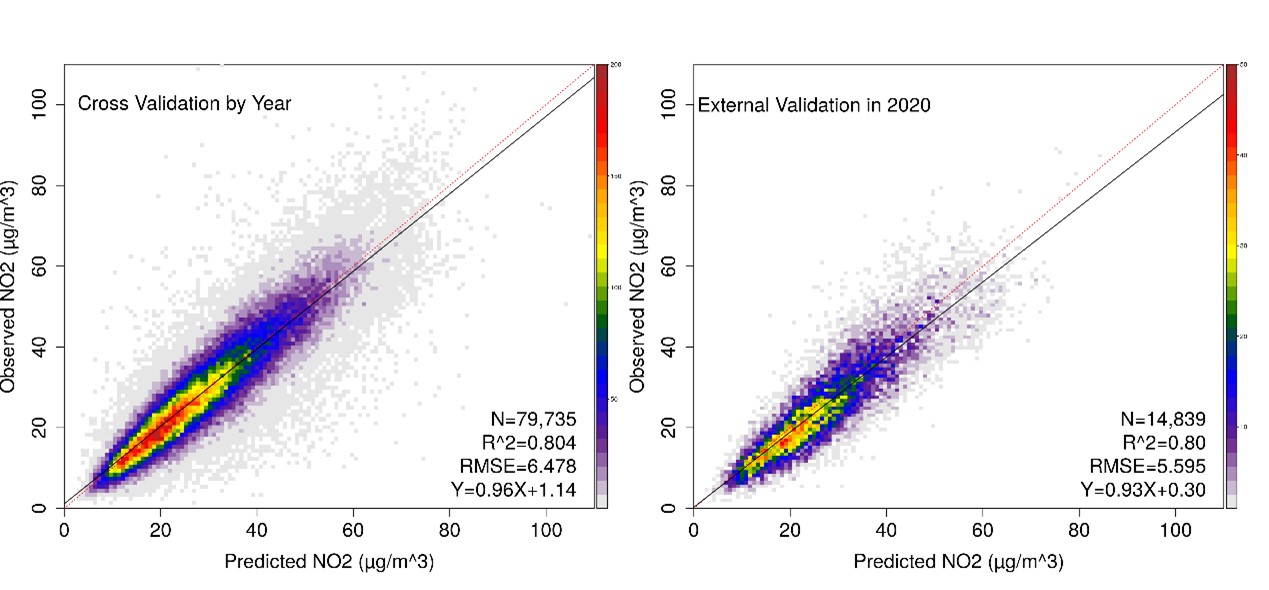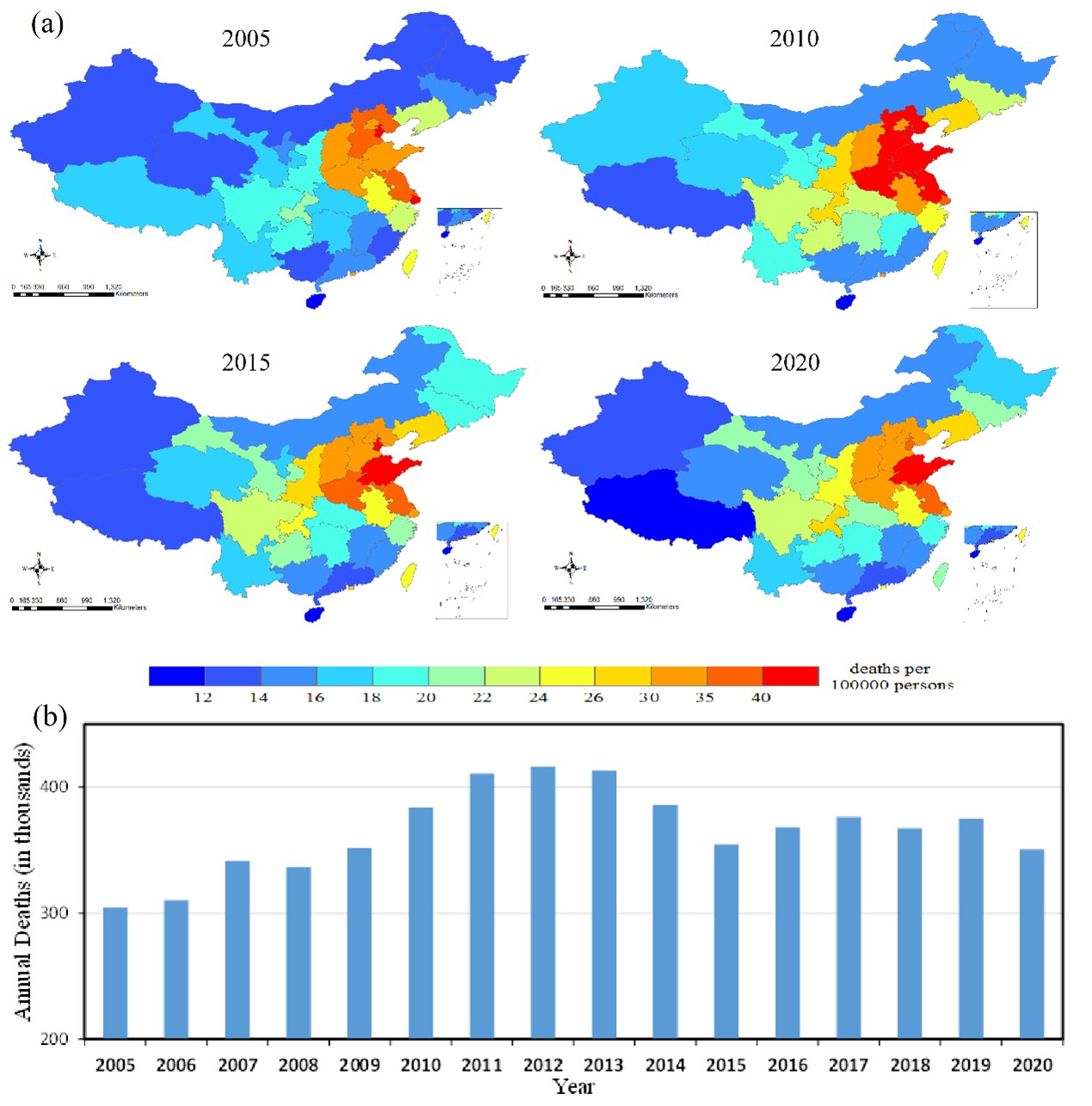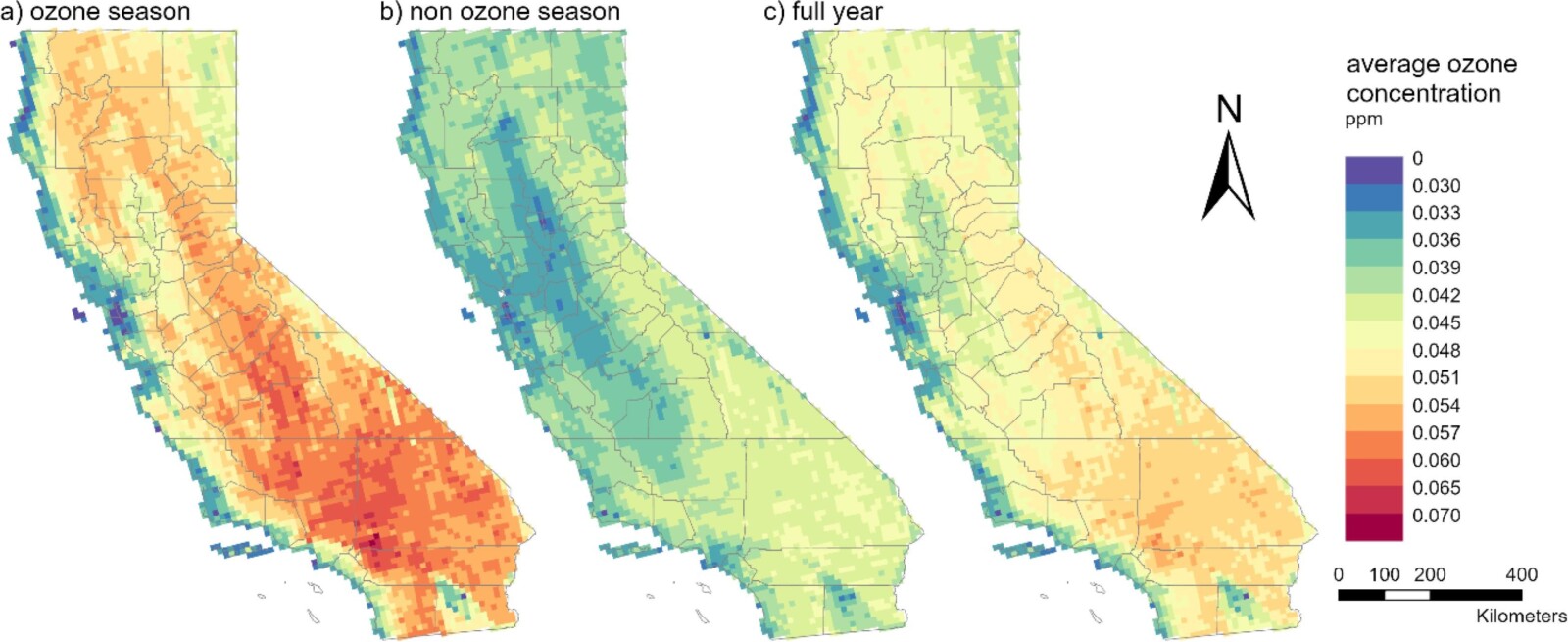Keyong Huang, Qingyang Zhu, Xiangfeng Lu, Dongfeng Gu, Yang Liu. (2023). Satellite-Based Long-Term Spatiotemporal Trends in Ambient NO2 Concentrations and Attributable Health Burdens in China From 2005 to 2020. GeoHealth, 2023, 7(5): e2023GH000798. doi: 10.1029/2023GH000798.
Read online: https://agupubs.onlinelibrary.wiley.com/doi/10.1029/2023GH000798
Previous studies about air pollution in China focused on fine particulate matter and ozone. As one of the major NOx emission countries worldwide, China has experienced serious air pollution in last decades. However, the long-term spatiotemporal distribution of NO2 levels, especially before 2013, was still unknown. In the current study, we firstly gap filled the missing OMI satellite NO2 values, then developed an ensemble machine learning model to estimate the spatiotemporal pattern of monthly mean NO2 concentrations at 0.05° spatial resolution from 2005 to 2020 in China and further estimated its attributable disease burden. The ensemble model predictions had good agreement with observations, and the sample-based, temporal and spatial cross-validation (CV) R2 were 0.88, 0.82 and 0.73, respectively. In addition, our model can provide accurate historical NO2 concentrations, with both by-year CV R2 and external separate year validation R2 achieving 0.80. The estimated national NO2 levels showed increasing trend during 2005-2011, then decreased gradually until 2020, especially in 2012-2015. The annual mortality burden attributable to NO2 exposure ranged from 305 thousand to 416 thousand, and varied considerably across provinces in China. Our model could provide reliable long-term NO2 predictions at a high spatial resolution for epidemiological studies in China. Our results also highlighted the heavy disease burden by NO2 and call for policies to reduce the emission of NOx in China.

By-year cross validation and external validation using data from year 2020.

Annual mean mortality burden attributable to long-term NO2 exposure in China. (a), annual NO2 related mortality burden per 100,000 persons at provincial level in 2005, 2010, 2015, and 2020. (b), national mean NO2 related mortality burden from 2005 to 2020.




